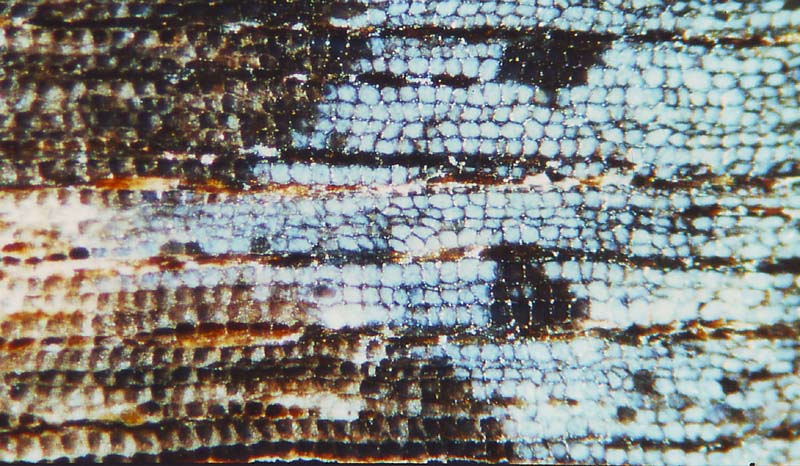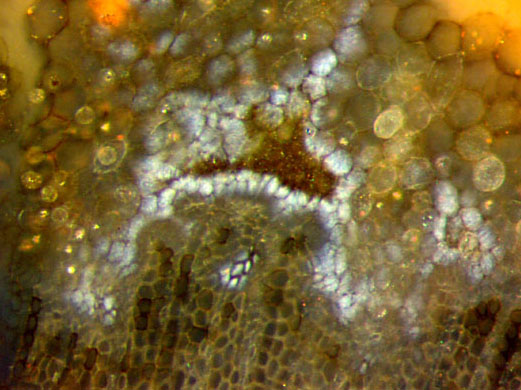Fossil wood aspects
Fossil
wood fragments are so abundant at some places that samples of average
quality would not arouse attention. Nevertheless, experience has shown
that occasionally a sample is found which deserves closer
inspection (as, for example,
the ones described in
Fossil Wood News 1, 15, 19, 21, 28, 30, 32, 33, 36, 38,
40).

Fig.1: Permian coniferous wood cross-section, cells
with different fills.
Image width 2mm.
Sample Kc/14 found by Andrea
Weiss at
Kleincarsdorf on 26.12.1997;
The
cross-section seen here, most probably of Permian coniferous wood,
obviously had undergone differing silicification processes. Judging
from the shadows, the cells below left look as if they
were empty but are filled with clear chalcedony. The
blue-milk stain of the majority of cells arose when the crystal grain
size in the chalcedony reached the
wavelength of light. The black stain in some of the cells may be
due to black clots consisting of fungus hyphae (as in Fossil
Wood News 4).
Fig.2 (below): Permian stem cross-section
with peculiar boundary between central pith and onset of wood:
large pith cells above, wood
cells in radial rows extending downwards.
Image width 1.3mm.
Sample Kc/24 found at Kleincarsdorf,
Doehlen basin, in the nineties.

Note that the pith cells (above right in Fig.2) are huge compared to
the wood cells below.
The white stain of part of the cells seems to be due to crystal grain
growth in clear chalcedony (as in Fig.1) but probably
triggered by microbial activity here.
The walls of the wood cells are mostly seen as pale
but some of them appear as black. Closer inspection shows that there
may be a black coating, of probably microbial origin, on the
inside of the wall while the outside of
the wall, belonging to a neighbouring cell, is still pale.
As
distinctly seen with two separate dark cells near the middle of this
picture, the interior of the cells with coated walls is darker since
the incident light does not enter. A few cells
nearby show quite the opposite: black walls but white fills.
This is peculiar but not contradictory, of course.
Black coatings on cell walls are common phenomena with early land
plants, as mentioned in Rhynie Chert News 83 and 172.
H.-J.
Weiss 2023
|

|
 44 44 |

 44
44


 44
44